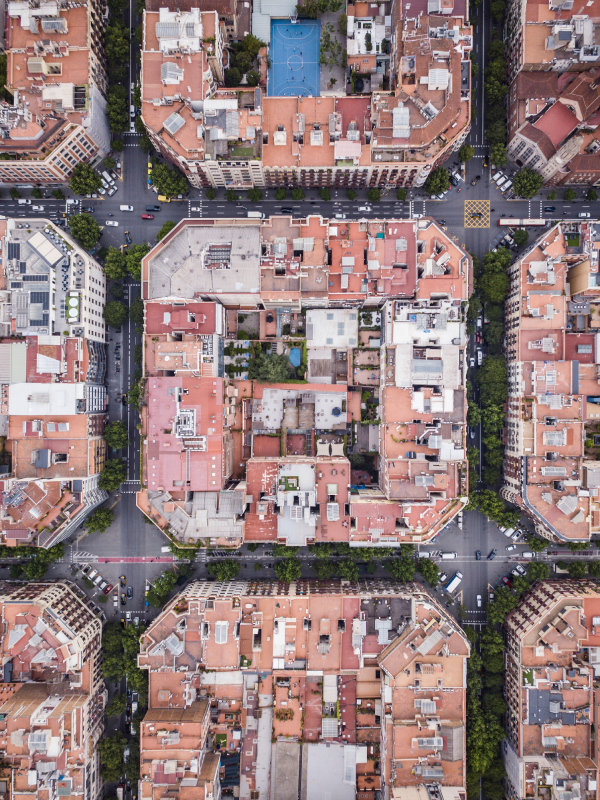
Europe experienced its hottest week on record this summer, according to the World Meteorological Organisation. In response, the spotlight on governments is heating up with regard to their sustainability efforts.

A big focus area has been reducing air pollution, the single largest environmental health risk in Europe. It caused 238,000 premature deaths in Europe in 2022 (albeit a huge improvement from 456,000 in 2021). This is largely due to unsafe levels of NO2, which is particularly damaging for those with respiratory infections or asthma.
To combat this, governments are aiming to reduce cars on the roads. In the UK, the government’s target is for 50% of urban journeys to be “walked, wheeled or cycled” by 2030. Despite this, UK Prime Minister Rishi Sunak recently announced he would be reviewing low-traffic neighbourhoods (LTNs) in a pro-motorist message.
Barcelona, in comparison, is particularly ambitious, aiming to have 81.54% of journeys on foot, bicycle and public transport by 2024.
How will Barcelona reach its sustainable mobility targets?
The Barcelona Agency of Urban Ecology has promoted the Ecosystemic Urbanism charter. This outlines cities as a complex interconnected system in which all the variables in the wider context (noise and air pollution) are taken into account during the urban planning process and encourages the production of cities as opposed to suburbs. But in order for these micro-ecosystems to be in harmony with the planet, a framework needs to be established for new urban developments and, arguably more importantly, the regeneration of current ones.
A pillar in this framework is the development of superblocks. The concept of Superilla or ‘Superblock’ has been in Barcelona since the ’90s, created by environmental and energy engineer Salvador Rueda. For two decades the project struggled to get funding as it was deemed too radical.
Following an intuitive redesign by Rueda in 2014 and the pressure mounting on governments to combat climate change, Barcelona has recognised superblocks as an urban planning model since 2017.
What is a superblock?
The aim of the superblock is to reduce traffic in residential areas. Each block comprises a 3×3 formation (approximately 400x400m) and no traffic is allowed within this area. There are nine blocks in Barcelona, with the aim to free up 60% of the area for ‘citizen spaces’.
And the results have been impressive. A report from the city’s public health agency showed that air pollution in the superblock around Barcelona’s central San Antoni market reduced significantly, with NO2 levels dropping by 25%.
Superblocks extend beyond improving air pollution as they also reduce noise pollution. Over half of Barcelona’s population is subjected to more than 65 decibels every day – the WHO has recommended reducing noise levels by road traffic to 53 decibels a day. A primary source of this is traffic noise, the reduction of which leads to mental well-being benefits.
Reducing road traffic also opens up areas for green spaces, parks and accessibility, providing opportunities for social interaction and exercise.
This human-centred approach to the urban ecosystem puts importance on citizens and their relationship with the city. It’s estimated that superblocks could save more than 700 deaths a year if widely implemented in Barcelona.
The success of the superblocks has prompted other cities to follow suit. In 2018, five superblocks were introduced in Buenos Aires and they’ve been made part of urban planning policy in more than 100 Chinese cities.
[Read more: Are kid-friendly superblocks a way for residents to reclaim their streets?]






